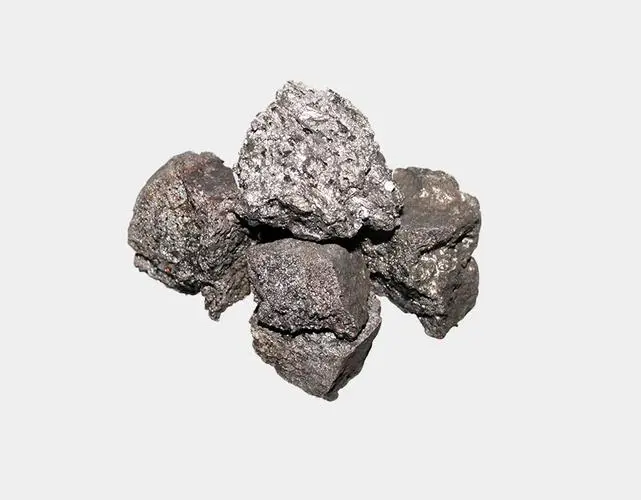Ferrophosphorus is a ferroalloy rich in phosphorus, commonly used as a smelting material in steelmaking. Adding an appropriate amount of Ferrophosphorus in steelmaking can enhance the fluidity of molten steel. When adding Ferrophosphorus, it is essential to strictly control the phosphorus content to ensure the wear resistance and brittleness of Ferrophosphorus. Introducing about 0.15% phosphorus in steel significantly improves its wear resistance, increases tensile strength, improves overall performance and surface quality, and enhances thermal conductivity and heat resistance. The network-like distribution of phosphorus eutectic effectively improves thermal conductivity and heat resistance, ensuring even wear and reducing sparks during friction.

Introduction of Ferrophosphorus
Ferrophosphorus is obtained through electric furnace smelting, containing 20-26% phosphorus and 0.1-6% silicon. It is a symbiotic compound that can alter the corrosion resistance and chip-cutting properties of steel. Used as an alloying agent in steelmaking, Ferrophosphorus can also produce phosphates. FeP1 and FeP2 are two varieties of Ferrophosphorus produced in China, containing 15-20% phosphorus. The properties of phosphorus include an atomic number of 15, atomic weight of 30.97, outer electron structure of 3S3P, density of 1.83g/cm3 (white phosphorus) and 2.2g/cm3 (red phosphorus), melting point of 44℃, boiling point of 257℃. Ferrophosphorus, containing 18-25% phosphorus, has a melting temperature range of 1100-1250℃ and a density of 5.8-6.5g/cm3.
While phosphorus is considered a harmful impurity in most steels, in certain situations, it plays a specific role. Adding Ferrophosphorus to some steel grades can increase strength, corrosion resistance, and workability. However, it may also increase brittleness. In cast iron, adding Ferrophosphorus improves fluidity, enhancing casting performance and surface quality. For example, gray cast iron with about 0.5% Ferrophosphorus increases tensile strength, while wear-resistant cast iron with around 0.15% Ferrophosphorus significantly improves wear resistance.
Industrial Applications of Ferrophosphorus
Ferrophosphorus powder can replace zinc powder, primarily due to the high cost of zinc powder as a corrosion-resistant material. Using Ferrophosphorus powder instead of zinc powder not only reduces smelting costs but also provides corrosion resistance comparable to zinc powder. Ferrophosphorus powder’s cathodic protection properties create a conductive pathway during smelting, reacting with air to confer corrosion resistance to the produced steel.
Combining the use of Ferrophosphorus powder with zinc powder significantly improves the utilization rate of zinc powder in smelting, leading to cost savings. The effectiveness of Ferrophosphorus powder replacing zinc powder is generally around 20-50%, depending on factors such as the quantity used, product demand, and other operational considerations.
Ferrophosphorus powder, when combined with zinc powder, offers non-toxic, odorless, and tasteless characteristics, making it suitable for the production of conductive and thermally conductive products. In the ferroalloy and steelmaking industry, Ferrophosphorus powder is crucial. Its application in anti-corrosion coatings reduces zinc fumes generated during welding and cutting, improving the working environment and labor protection. It also enhances adhesion in conductive coatings, effectively improving the welding characteristics of zinc-rich coatings.
Ferrophosphorus plays a significant role in the steelmaking industry by offering rapid absorption compared to silicon iron blocks. Its quick reaction and uniform distribution in molten steel shorten the deoxidation time, improving steelmaking efficiency. With high recovery rates, Ferrophosphorus can be reused, reducing manual labor intensity. These advantages make Ferrophosphorus increasingly favored by steelmakers.
How to Choose Ferrophosphorus
Ferrophosphorus, produced through professional electric furnace smelting, is convenient to use and melts more easily than block-shaped iron alloys. It has good affinity and a fast phosphorus-enhancing effect in steel, making it a widely purchased material. Selecting high-quality Ferrophosphorus is crucial for many purchasing companies.
Ferrophosphorus with low impurities is considered a superior smelting material, effectively reducing slag quantity, improving recovery rates, and lowering smelting power consumption. To ensure product composition, attention must be paid to controlling the phosphorus-to-manganese ratio in the charged Ferrophosphorus. The smelting of ferromanganese is a molten state reduction process, and the metallurgical characteristics of minerals significantly impact ore melting, reduction, and electric furnace operations.
Reducing high-priced oxides will alter mineral structures, causing some ores to undergo reduction sintering. Sintering can disrupt the permeability of the charge layer. Therefore, ores with high sintering rates are not suitable for submerged arc furnaces.
Early slag formation from Ferrophosphorus can alter the charge’s electrical structure and furnace temperature distribution. Ferrophosphorus with high SiO2 content has a lower melting temperature and early slag formation. The low activity of MnO and SiO2 in the initial slag is unfavorable for manganese and silicon reduction. Conversely, Ferrophosphorus with high CaO and MgO content is more suitable for producing silicomanganese alloys. In Ferrophosphorus, free (not in the form of silicates or aluminosilicates) MnO exists in the molten state as ferrous phosphide, balancing with MnO dissolved in the initial slag, enhancing manganese reduction. Added silica is easier to reduce to form silicon in the furnace than silicate in the charge.
In calculating raw material ratios, mineral composition and changes in mineral structure with temperature must be considered. Soft Ferrophosphorus ores, mainly composed of MnO2, have high oxygen content, consuming a significant amount of reducing agent during smelting. Crystalline water in decomposing hard Ferrophosphorus requires energy consumption. To maintain carbon balance, ores with low oxygen content should be chosen whenever possible. Experience suggests that brown Ferrophosphorus is more effective than soft and hard Ferrophosphorus. Sulfur is a surfactant in slag melt, catalyzing the molten reduction of MnO.
Ideal Ferrophosphorus Manufacturer –TAIZHIHE
TAIZHIHE is a supplier specializing in the production and research of Ferrophosphorus. Over the years, TAIZHIHE has gained significant influence in the industry, earning favorable reviews for the high quality and specifications of its Ferrophosphorus among customers. With a commitment to honest business practices and top-notch quality, TAIZHIHE continuously serves and supplies the Ferrophosphorus industry.
